Regular tester David ‘Wattie’ Watt is fast and fabulous. Fast as blazes on anything with two wheels and a fabulous gent to boot. We both have a love of hooliganism and I value the bloke’s opinion, so I was looking forward to hearing the superlative-laden speech I’d no doubt get when he got home after picking up the 890 Duke R from my place.
I tested the 890 Duke R back in 2020 (AMCN Vol 70 No 12) when the bike hit Aussie showrooms. Aside from colours, it hasn’t changed but after testing the Ducati Monster SP and Triumph’s Street Triple RS (AMCN Vol 73 No 05), we thought it time to roll the Duke out again to see if the orange weapon has aged against the two newer models.
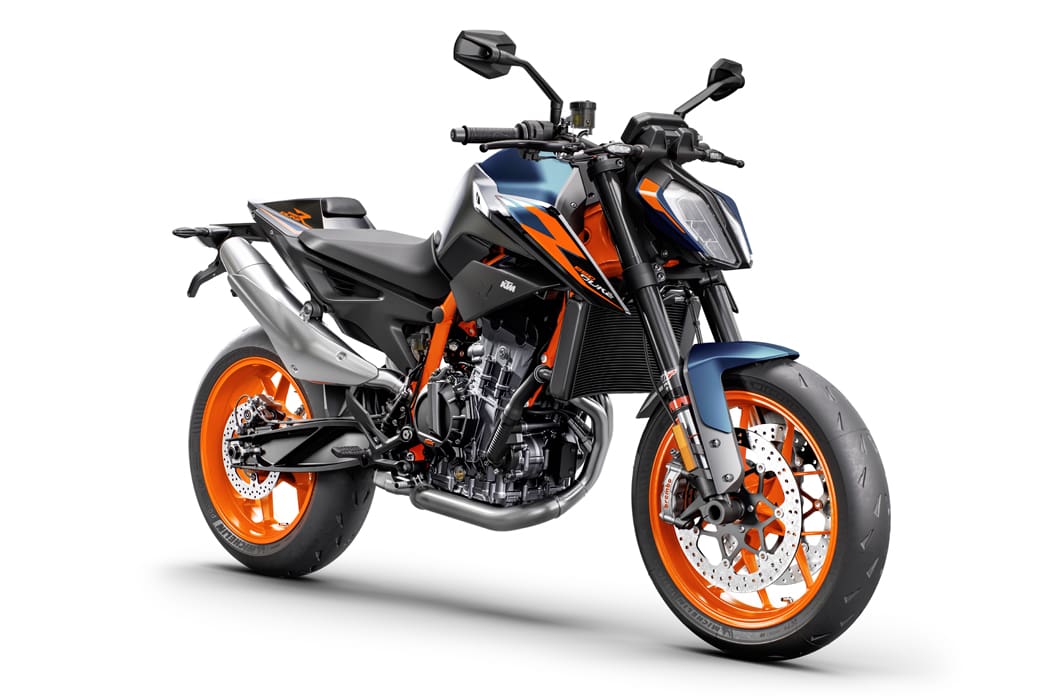
“What did you think, mate?” I said into the phone, awaiting his reply.
“When I first jumped on it, it felt small, firm and awkward. I wasn’t impressed at all…” there was a pause, “…but as soon as I arrived at the twisties, it suddenly all made sense”.

And that, folks, is what the 890 Duke R is all about, cornering and all manner of shenanigans. If you’re offended by wheelies, dragging knees or backing the rear end into a corner, the 890 Duke is not for you and you should continue running the iron over your beige cardigan.
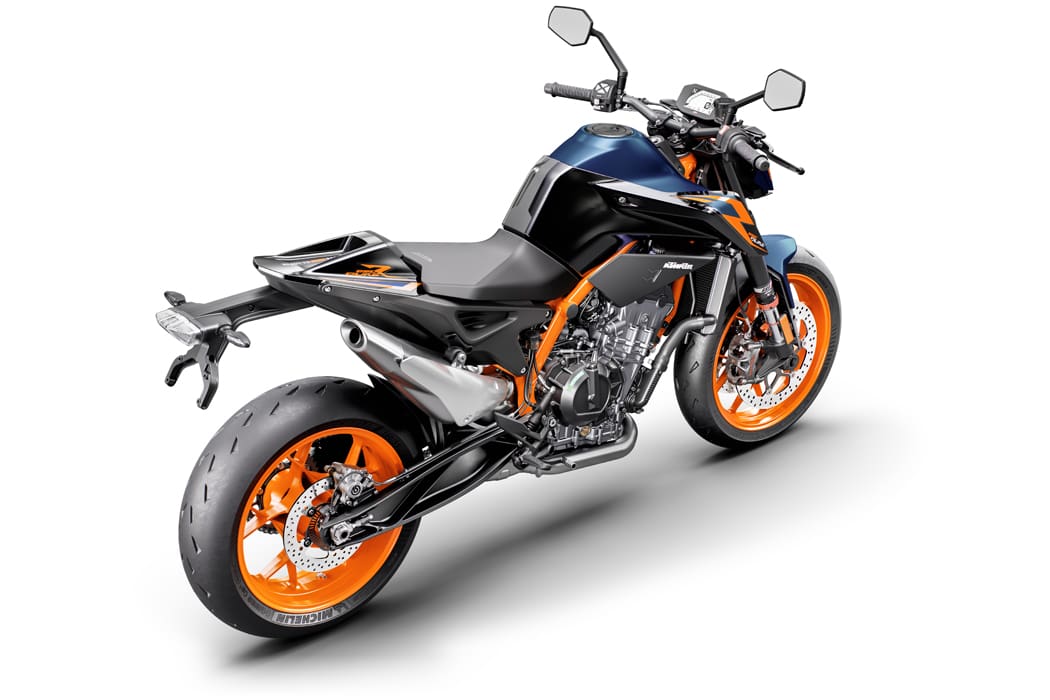
The Duke is a minimalist’s dream, there’s nothing on it that doesn’t need to be there, save for a bit of plastic around the tank to give it its aggressive shape. It’s about as stripped back as you can get. Even the subframe, which is cast aluminium and houses the airbox, lacks any plastic side panels. You don’t get pillion ’pegs and there’s just a neat little plastic hump where you might expect to find a passenger seat. Good, the 890 Duke is no place for freeloaders!
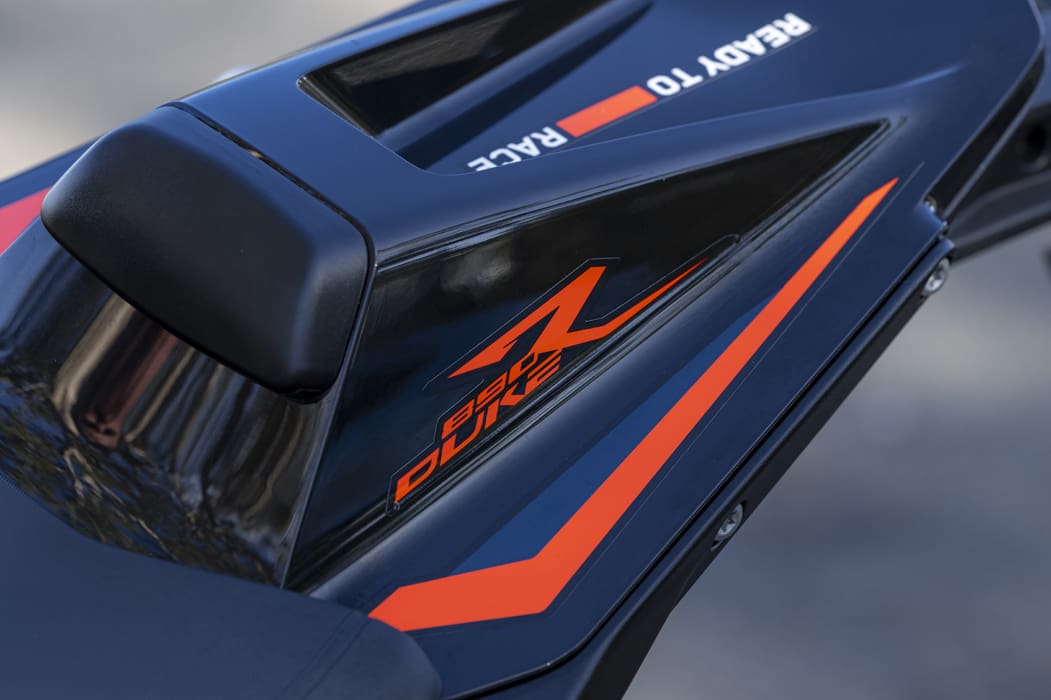
The level of finish isn’t as good as Ducati’s Monster or Triumph’s Speed Triple, which look far more premium. The switchblocks especially look a bit ‘cheap’ compared to the other two. The paintwork is flawless though, even though many may feel its matte paint scheme looks a little less premium than the deep metallic finish of
its rivals.

When you throw a leg over the relatively high 834mm seat and whack your hands on the motocross-style ’bars, you’re met by the 4.3-inch TFT display and, well. not much else. You can see some of the 14-litre tank in your peripheral vision and the front mudguard, but that’s about it. It feels like you’re sitting on an oversized enduro bike, with your body positioned right up front ready to attack.
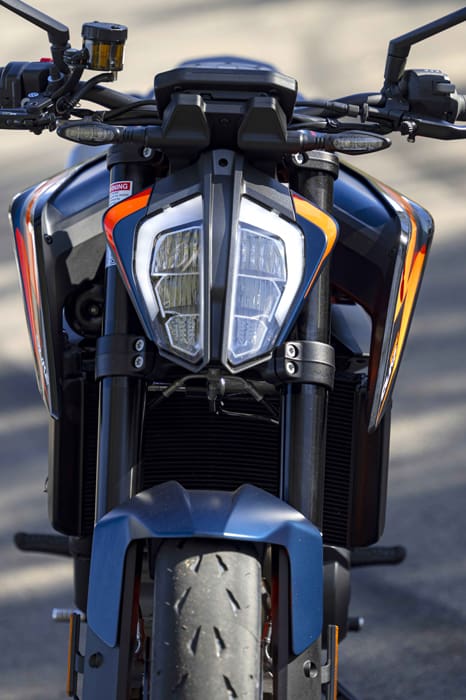
It is, however, quite a comfortable riding position with high ’bars that don’t put a lot of weight on your wrists, but with enough head-down-bum-upness not to put all your weight through your tailbone. Good thing too, because it feels like the seat is made of some sort of billet concrete alloy – good for sliding around on while cornering, and brilliant for producing callouses on your bum cheeks. KTM does offer seating options so you may find saddle salvation there.
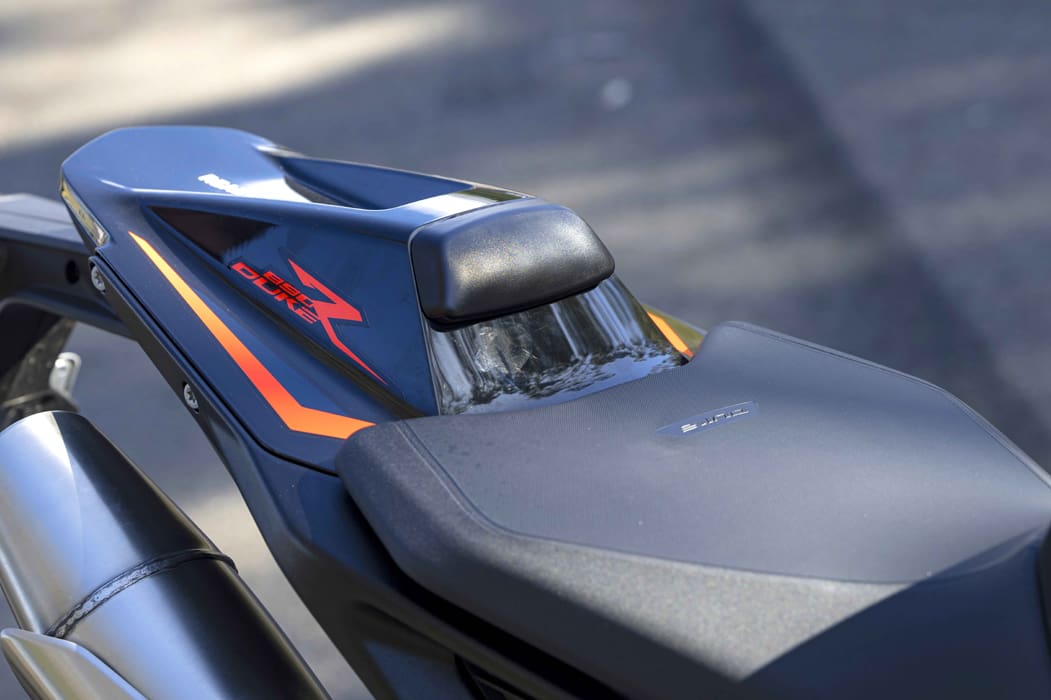
Thumb the starter and you’re met with very little vibration, not a lot of noise and no idea of what’s in store for you. The Duke’s engine is aggressive, as is the rest of the bike for that matter. It’s like a horde of angry wasps (not hornets) hell-bent on stinging a passing hiker. The 889cc parallel twin spits out a claimed 89kW (119hp) of power and 99Nm of torque in a dry package that weighs in at a claimed 166kg. Fill the tank and add the rest of the required fluids and you’re still only looking at around 181kg ready to menace.
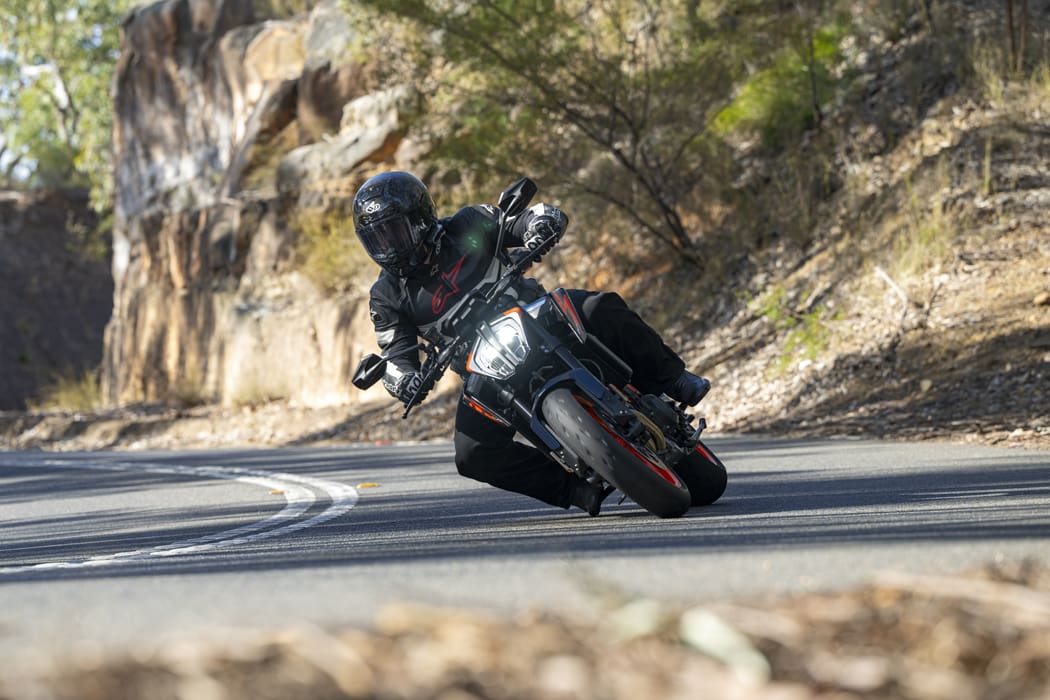
For comparison, the Monster SP and the Street Triple RS have a claimed output of 82kW (110hp) and 93Nm for the Monster and 95.6kW (128hp) and 80Nm for the Triumph. Both weigh around the same as the Duke.

The Duke hits hard straight off idle and despite its powerful, low to midrange punch, it pulls clean and strong right up until redline. There’s nothing subtle about this engine. It makes lovely noises, popping and crackling as you bang down through the six-speed gearbox, and the 270-degree crank gives the high-slung muffler a raspy although muted note. I’d love to hear the Duke with a freer-breathing exhaust on it.
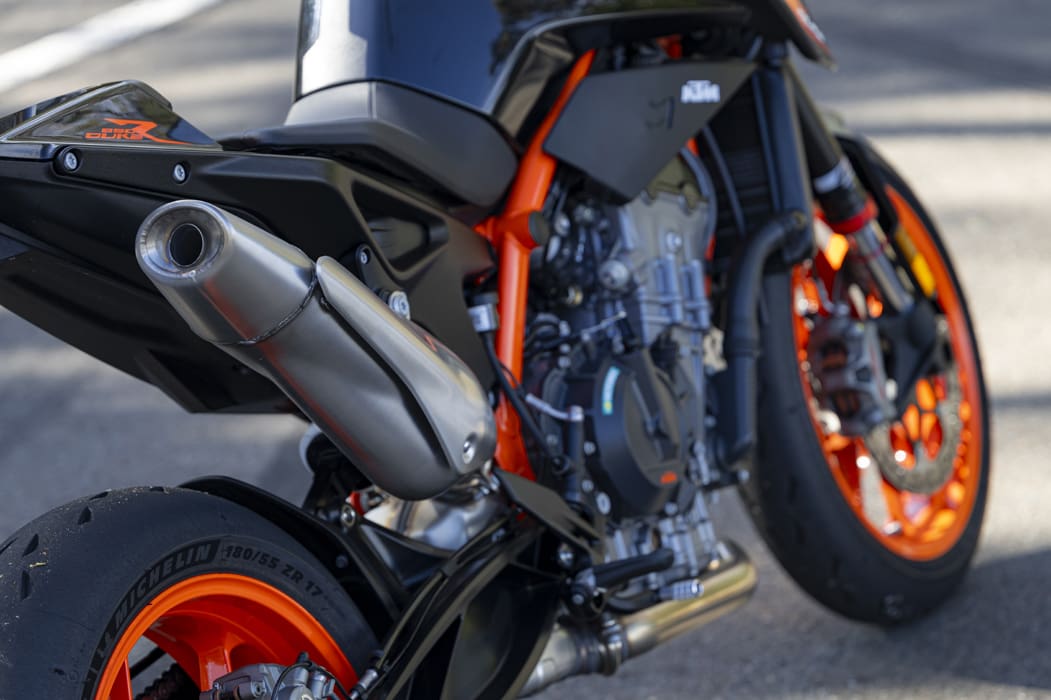
The engine is held in a tubular-steel frame that pumps maximum feedback through to the rider. It’s the same frame the company used for the 790 Duke and why muck around designing something new when it worked so well. Apart from the engine, of course, the biggest difference between the 790 Duke and the 890 Duke R is the trick WP suspension. Swinging off the front is a 43mm Apex USD fork that offer both compression and rebound adjustment but no preload adjustment. At the rear of the bright-orange frame, denoting R-model KTM roadies, is an aluminium lattice-style swingarm controlled by an Apex monoshock offering rebound, preload and high and low-speed compression adjustment.

KTM is bang on the money with the Duke’s suspension. It’s as good as any non-semi-active suspension available on a production bike today. Like the rest of the bike it feels stiff and racy, and you find yourself tensing slightly before you hit a bump, ready for the jarring you’d expect likely to with stiff suspension. But it doesn’t come, the WP kits just soaks it up. That’s not to say it’s soft, it’s not, it’s just really bloody well-sorted.

And the handling, well that’s on point and nigh-on perfect for my speed and weight on the street. It’s infinitely flickable, light and precise and the only trouble you may have is hitting an early apex or two until you get used to the speed and ease with which this thing can turn.

This doesn’t mean the Duke is unstable or nervous, it’s rock solid. Under brakes especially, there’s none better.

Now add to this a set of super sticky Michelin Power Cup 2 tyres and you have the perfect recipe for cornering hi-jinx. On tight twisty roads, there’s not a production bike on the planet the 890 couldn’t give a hurry up to – it’s special.
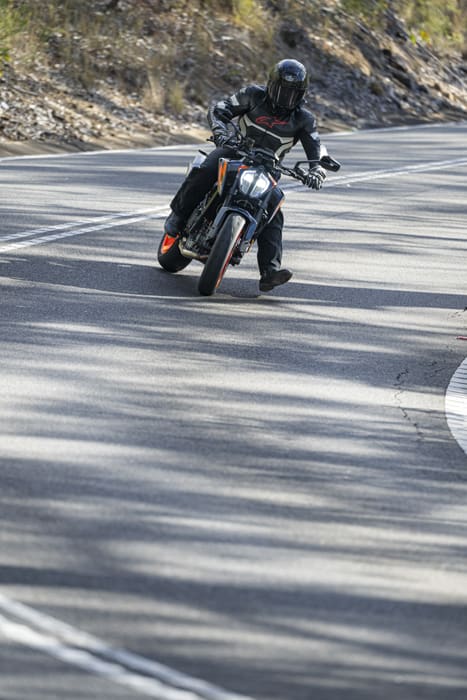
The 890 is adorned by Brembo Stylema Monobloc calipers with an MCS radial master cylinder, and 320mm front rotors. They’re as good as anything available today on a production bike and, I reckon, work just that bit better than the similar equipment on the Monster and the Street Triple RS. The only bike I can think of that would best the Duke is the BMW M 1000 R that Wattie tested last issue (Vol 73 No 07). Stability under brakes is sublime, and you can trail brake into corners in a very cheeky fashion indeed.
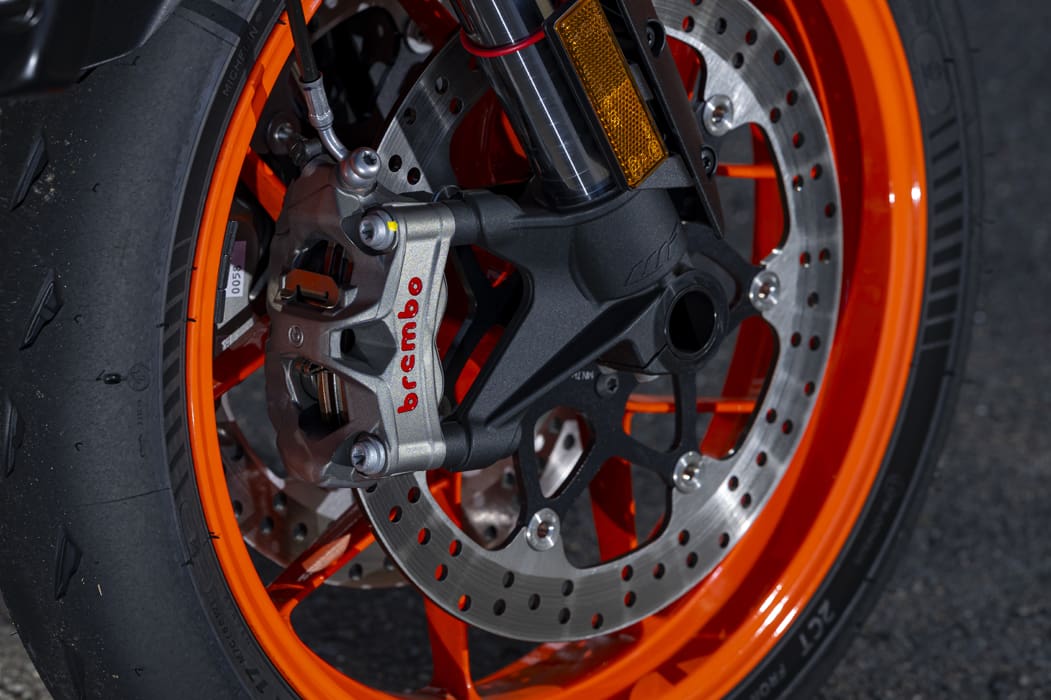
With plenty of power and top-notch handling and braking, the 890 makes you feel like you’re riding like a pro while always feeling like you’ve got a bit up your sleeve. It’s so cliché I know, but the Duke is incredibly confidence inspiring. It may be an angry little machine in some ways, but it would be such a good bike to learn your craft on once you step off your provisional licence because it’s just so easy and fun to corner on.
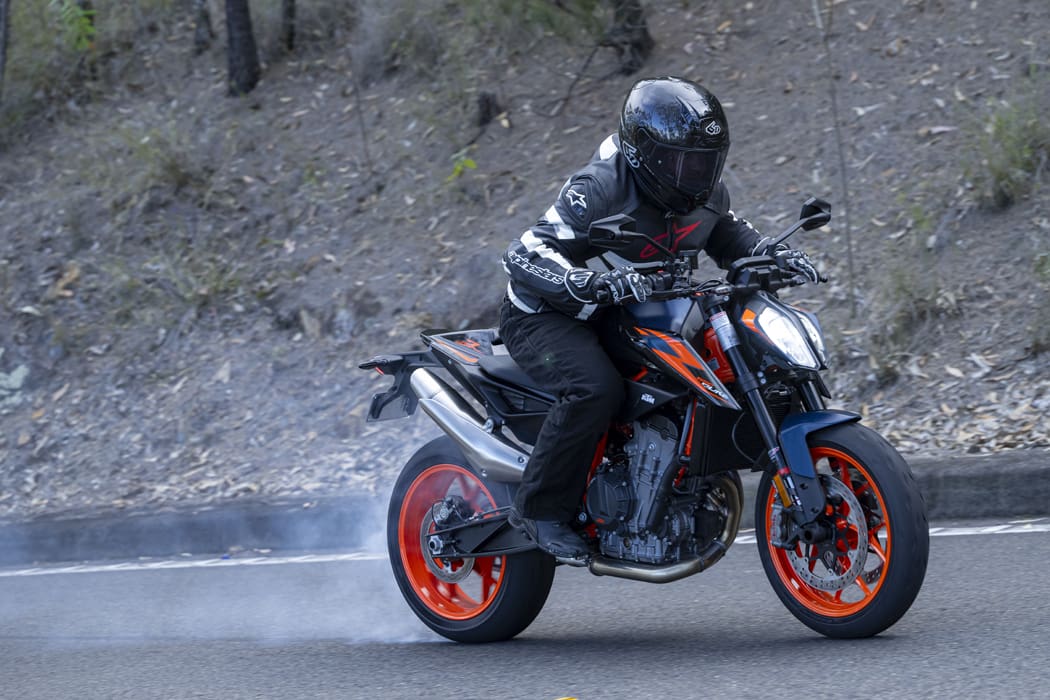
There’s also the fact that you’re backed up by a suite of electronic rider aids that include cornering ABS and traction control to catch you if things get out of shape. The Duke R runs a TFT dash that will be familiar to those who have spent time on recent KTMs. The setup hasn’t changed since 2020 but the world of TFT dashes sure has. What I once considered to be a pretty user-friendly system I now find difficult to use. Having to delve into the menu to change ride modes or switch the combined traction and wheelie control off – or pretty much do anything – grows old quickly and just isn’t necessary. Bung a mode button on it, Team Orange, there’s plenty of room on the budget-looking switchblocks.
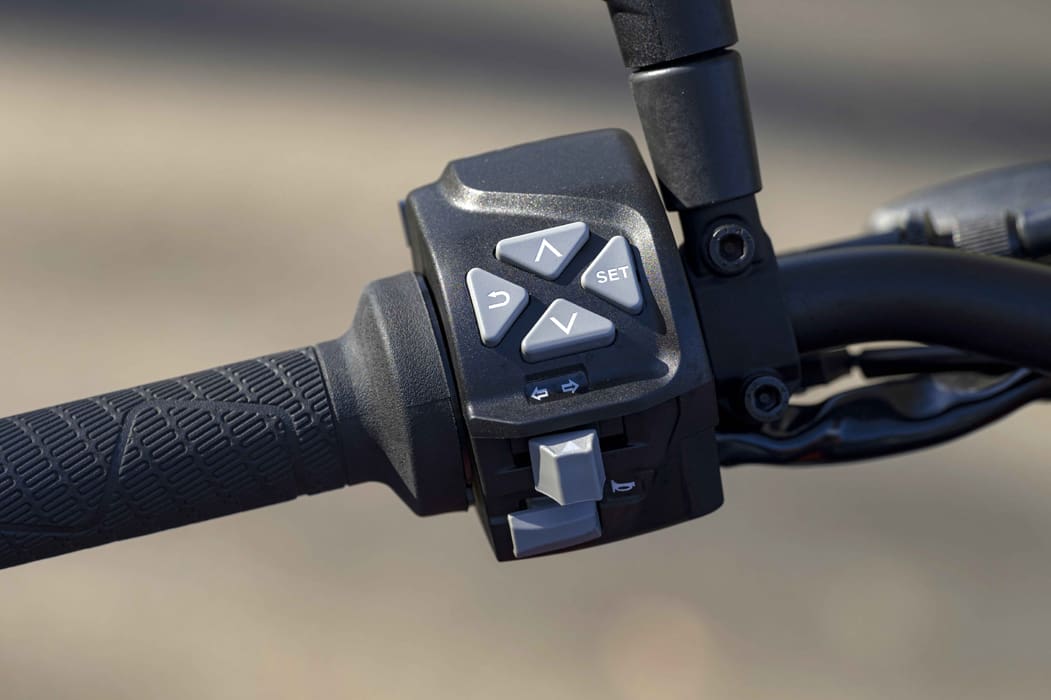
And while I’m in the whinging mood. Why is a quickshifter not included in the price? I can appreciate KTM may have sunk substantial time and money into the Duke’s suspension but, at $20,760 ride away, it’s right to expect a quickshifter in 2023. The likes of Triumph’s similarly priced Street Triple RS, Ducati’s Monster, Yamaha’s MT-09SP and even Suzuki’s new budget-conscious $14k GSX-8S are all loaded with one as standard. But no, if you want one, it’ll set you back $647.56 plus fitting.
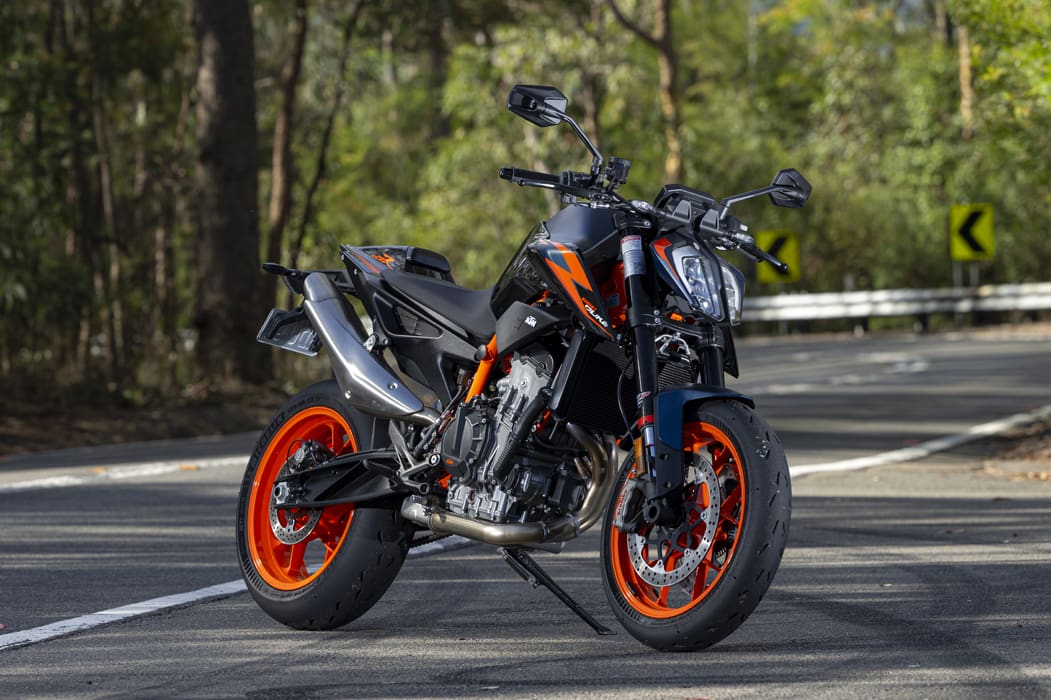
There’s also the matter of additions like the Tech Pack ($1296.79) and Track Pack ($647.56) that give you a bunch of extra electronic wizardry like extra modes, KTM motor slip regulation feature and launch control. These gizmos are already onboard and simply get switched on if you pay the coin. This is pretty common in the car world and increasingly so in the motorcycle sphere, but it still irks me.

If I could compare the 890 to something to help me explain how it feels, how it seems to relay every bit of information to the rider so acutely, I’d compare it to an enduro or motocross bike. There are no squishy rubber bits to hinder feedback, it’s like you’re plugged into the thing. Add to that its small stature, lightweight and commanding riding position and it feels like every corner can be attacked with cheek and aplomb.

The Monster and Street Triple are more refined, better finished and arguably better looking, but if you want madness, if want hooliganism, and you want the best handling, best braking and angriest mid-capacity motorcycle on the market, then the 890 Duke R should be your weapon of choice.
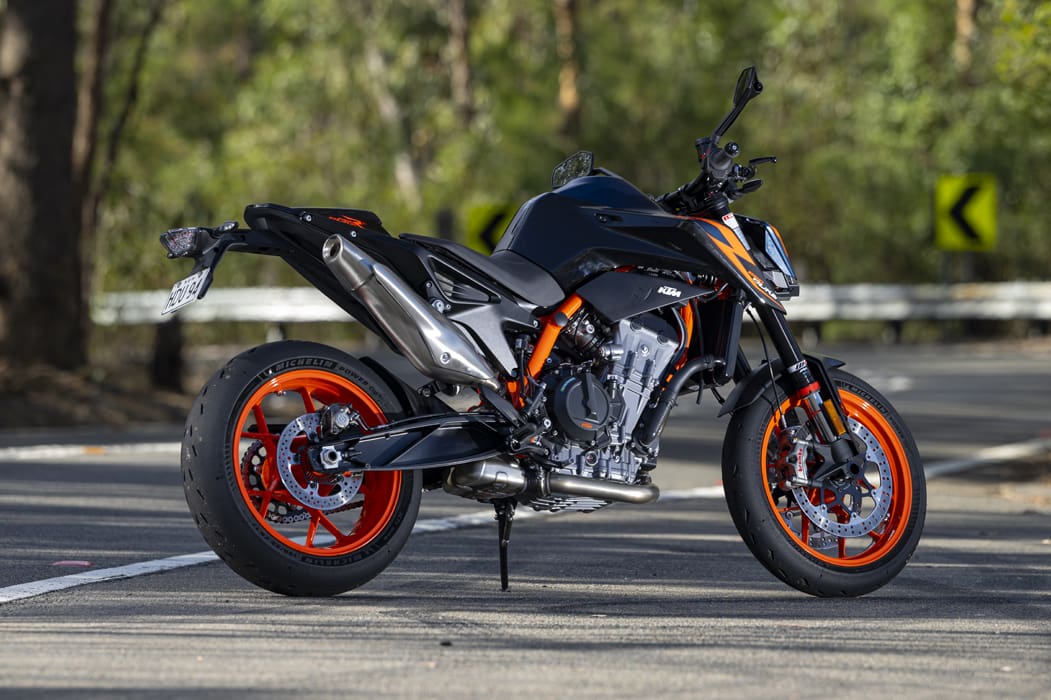
There are very few bikes I desire to have in my shed, but the Duke R is certainly on my shortlist. Now, how about that pay rise, Deano?

TEST: PETE VORST PHOTOGRAPHY INCITE IMAGES